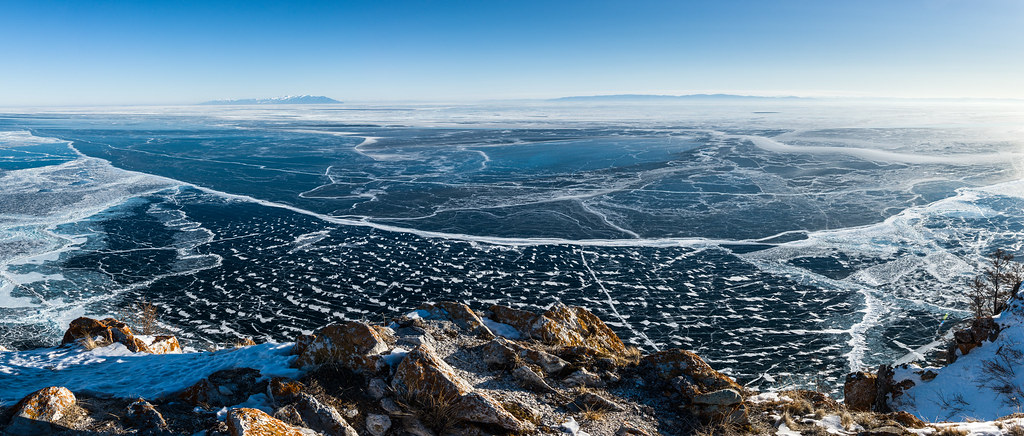
Lake Baikal, the world’s deepest rift lake, captivates the minds of many due to its intriguing characteristics and breathtaking beauty. Renowned for storing an astonishing 22-23% of the planet’s fresh surface water, this ecological treasure is vital for our environment. But what makes Lake Baikal so mesmerizing? A notable connection exists between it and Chile’s ‘blood-red lake’, sparking a myriad of myths and tales that captivate both locals and adventurous tourists alike.
Lake Baikal
While the term ‘blood-red lake’ might conjure up chilling images, the truth of Lake Baikal’s deep blue waters is equally enthralling. Beneath its crystalline surface lie countless secrets, and with a depth of about 1,642 meters, this ancient lake is estimated to be between 25 to 30 million years old, which contributes to its unparalleled biodiversity and the plethora of endemic species it supports.
As we explore deeper into the lake’s characteristics, one cannot ignore the fascinating tales surrounding its waters. The high temperatures of 50 degrees Celsius found in some areas of the lake hint at the geothermal activity beneath the surface. This phenomenon is often compared to the Red Lake in Chile, where its unusual color is attributed to high concentrations of iron oxide. While Lake Baikal does not share this hue, the comparison draws a parallel in terms of the allure and the mystery both bodies of water hold.

The formation of Lake Baikal is a fascinating geological story as well. Created by the Baikal Rift Zone, where the Earth’s crust is gradually pulling apart, this dynamic rift valley is still evolving today. This active geological feature not only contributes to the lake’s remarkable clarity and cleanliness but also allows for stunning water transparency, reaching depths of 30-40 meters in certain winter areas.
One of the intriguing elements of Lake Baikal is the presence of geothermal vents, known to produce water as hot as 50 degrees Celsius. This unique feature adds an unexpected twist to the lake’s ecosystem, creating a habitat for numerous species that thrive in warmer waters, distinct from those in the colder, deeper parts of the lake. This difference in temperature can lead to fascinating interactions and adaptations among the lake’s inhabitants.
When it comes to biodiversity, Lake Baikal is nothing short of astounding. Hosting over 1,000 plant species and 2,500 animal species, many of which are unique to this remarkable ecosystem, the lake is a vibrant web of life. The Baikal seal, one of the few freshwater seal species globally, has become a symbol of this rich wildlife, underscoring the lake’s ancient age and its critical importance to the global ecosystem.

Moreover, the cultures surrounding Lake Baikal weave their own interpretations and stories about this majestic body of water. The Buryat people, native to the region, have long held the lake in reverence, infusing their spiritual beliefs and practices with its presence. Their tales often intertwine elements of nature with human experiences, creating a rich tapestry of mythology that enchants all who are lucky enough to experience it firsthand.
The legends of sacrifice and reverence
The legends of sacrifice and reverence also play a part in the lake’s narrative. Historical accounts tell of a time when, during a severe drought, villagers made sacrifices to the spirits believed to inhabit the lake. The story of three young girls bound in a pact to appease the gods by sacrificing their lives to save their people adds a layer of tragedy and mystique to the lake’s already rich mythology. This tale resonates with the connection many cultures strive to maintain with nature, often portraying it as an entity that demands respect and reverence.
As we delve deeper into the charm of Lake Baikal, it becomes clear that the stories surrounding its waters are as profound as its physical characteristics. The lake does not just serve as a body of water; it represents the convergence of human experience, scientific inquiry, and natural wonder. The juxtaposition of its crystalline clarity against the warmth of geothermal springs illustrates a striking balance in nature, where extremes coexist harmoniously.

Lake Baikal is not merely a stunning geographical feature; it is a canvas of stories, a reservoir of ancient life, and a testament to the geological forces that shaped it. As we continue to explore the mysteries of this lake, we are reminded of our own connection to the world around us, the stories we share, and the respect we owe to the natural wonders that continue to inspire and intrigue us. The blood-red lakes may captivate our imagination with their color, but it is the depth and richness of Lake Baikal that truly enchants those who seek to understand its secrets.
Lake Baikal is a treasure trove of cultural significance and folklore, deeply intertwined with the history and the people of Siberia. The Buryat tribes, indigenous to the region surrounding the lake, hold a rich tapestry of myths and beliefs that celebrate and explain the natural wonders of Baikal. Among these narratives, the lake is often seen as a sacred entity, a source of life that commands respect and reverence. This profound connection between the people and the lake has cultivated a tradition of storytelling that has been passed down through generations, providing a glimpse into the spiritual relationship the Buryats maintain with the natural world.
One particularly poignant tale recounts the lake’s origin. Legend has it that Lake Baikal was formed from the tears of a grieving young girl whose father drowned while saving a sacred animal. Her abundant tears filled the valley and created the lake we now cherish. This narrative not only offers an explanation for the lake’s existence but also highlights the deep emotional connections the Buryat people share with their surroundings, casting the lake as a living entity that reflects their joys and sorrows.

The legend of the three young girls, who sacrificed themselves during a drought to appease the gods, adds another layer of mythology surrounding Lake Baikal. It is said that these girls, bound by their fate, would cry every day, and their tears turned the lake into a body of water rich with deep emotions. This narrative echoes across the region, symbolizing the profound respect the locals have for nature, viewing it as an entity that requires balance and harmony. Such stories illustrate the belief that human actions have a direct impact on the environment, thus fostering a sense of responsibility to protect and honor the natural world.
Cultural practices around Lake Baikal often reflect these sentiments. The Buryats engage in various rituals to honor the lake, including offerings made to the spirits believed to inhabit its depths. These practices, ranging from the laying of stones to the burning of incense, are infused with a deep sense of gratitude and reverence. The lake is viewed as a protector, a source of sustenance, and a keeper of sacred traditions. The act of connecting with the lake goes beyond mere symbolism; it is an essential aspect of the Buryat identity and their way of life.
Furthermore, the lake’s significance extends beyond local mythology; it has become a symbol of resilience and beauty in Russian culture as a whole. Poets, writers, and artists have drawn inspiration from the lake’s breathtaking landscapes and its enigmatic nature. The stark contrasts between the serene blue waters and the dramatic surrounding mountains create a captivating backdrop that has fascinated countless individuals throughout history. These artistic expressions serve to celebrate the lake’s grandeur while also highlighting the fragility of its ecosystem.

As we explore the cultural significance of Lake Baikal, it’s fascinating to consider how these stories and practices have shaped the perspectives of not just the Buryats, but of people across the globe. In an age where environmental concerns are becoming increasingly urgent, the narratives surrounding Baikal can provide valuable insights. They remind us that our connection to nature is a shared human experience, transcending geographical and cultural boundaries. The reverence that the Buryat people hold for Lake Baikal is a call to action, urging us all to cultivate a sense of respect and gratitude for the natural world.
In contemporary times, Lake Baikal has garnered international attention, leading to increased tourism and research efforts. Visitors from around the world flock to its shores to witness its beauty and learn about its ecological importance. However, this influx has also raised concerns about the lake’s preservation. The delicate balance between honoring the cultural heritage and ensuring the ecological integrity of Baikal is a pressing issue that requires collaboration between local communities, scientists, and policymakers. Protecting Lake Baikal is not just about safeguarding a natural wonder; it’s about preserving the stories, traditions, and lives that are intricately woven into its fabric.
Lake Baikal transcends being merely a geographical wonder; it serves as a cradle for mythology, culture, and history. The synergy between its imposing physical presence and the spiritual narratives of the Buryat people crafts a rich tapestry of meaning, continually inspiring those who encounter it. The lake’s charm extends well beyond its shimmering waters, prompting us to ponder our relationship with nature and each other. As guardians of the Earth, we must respect the stories and traditions that shape our comprehension of the world, ensuring that the legacy of Lake Baikal remains alive for future generations. Next time you hear the tales of a lake awash in ‘blood’, remember that the true essence of Baikal lies not just in its vast depths but within the hearts of those who treasure it, for it is these stories that breathe life into this magnificent place.
Related posts:
Lake Baikal
The Oddities of Lake Baikal
Family Science Project Yields Surprising Data About a Siberian Lake




